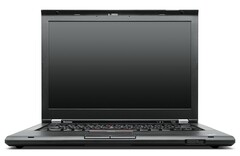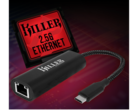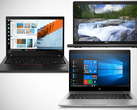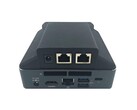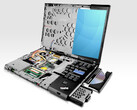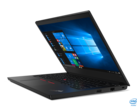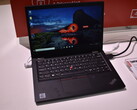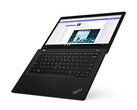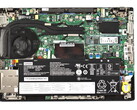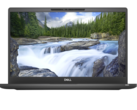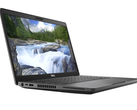Update (12/9/2019): Added more information about the importance of Ethernet to enterprise users.
Imagine you've walked onto a stage to host a presentation on something important to you. You have your presentation loaded up, your laptop is fully charged, and you brought your VGA/DVI to HDMI adapter just in case. After setting down your laptop on the podium, you grab the display cable and notice something horrifying: It's a USB-C cable.
Luckily for your presentation, that’s little more than a “dream” as of today. Even as 2019 slowly fades into 2020, USB-C display cables, such as USB-C to HDMI cables, hardly exist outside of bedrooms and homes. Most USB-C display solutions are basically HDMI or DisplayPort from the dock/dongle to the screen with the only “modern” cable being between your laptop and an intermediate box. HDMI certainly isn't dead, so why is the port disappearing from laptops?
The big issue here is the disappearance of various ports from business laptops. Over the past few years, companies have been slowly removing ports one by one and replacing them with USB-C ports. The most notable casualties of this “war on ports” would be the RJ45 connector (commonly referred to as the “Ethernet jack”), charging barrels, and display connectors of all types. Full-size SD card slots are either turning into microSD slots or vanishing entirely, even though a number of modern DSLR cameras (among other things) still use full-size SD cards. All of these connectors have significant perks to being found on business laptops, such as backwards-compatibility, but they’ve been slowly disappearing from some recent models. This seems to be a bigger issue with “high-end” business laptops.
Take, for instance, Lenovo’s ThinkPad T470s. It comes in just shy of three pounds, has only slightly thicker bezels than the current model year, and it is only a little over a millimeter thicker than the silver edition of the ThinkPad T490s. There was a silver variant of the T470s as well, but the T490s in silver is actually a fair bit heavier (about 0.4lb heavier according to Lenovo's PSREF data sheet). Even though the two models are similar in footprint, you have quite the variety of ports.
| Port | ThinkPad T470s | ThinkPad T490s |
|---|---|---|
| Charging Barrel | Yes | No (USB-C PD) |
| USB Type-A | Yes, 3 | Yes, 2 |
| USB-C | Yes, 1 (Thunderbolt 3) | Yes, 2 (1x Thunderbolt 3) |
| HDMI | Yes, 1 | Yes, 1 |
| RJ45 (Ethernet) | Yes, 1 | No |
| Headphone Jack | Yes, 1 (combo) | Yes, 1 (combo) |
| Docking port | Yes | No |
| SD Card Slot | Yes | microSD, combined with micro-SIM |
| Micro-SIM | Yes | Combined with microSD |
You effectively lose your Ethernet port, a USB Type-A port, docking connector, an easily repairable barrel connector, and a dedicated SD card slot all over a few millimeters of depth. This not only makes the machine less convenient to use, but it overall makes it more difficult to repair in the case of the power connector breaking (which in this case is a USB-C port).
Lenovo certainly isn’t the only company to do this as of late. Recently, Dell has done this on some of its latest Latitudes. Specifically, the Latitude 7400. This laptop no longer has an RJ45 port, despite the fact that similarly sized laptops from this refresh do. On the right side of the laptop, there’s an awkwardly large gap between the lock slot and the Type-A port, which would be where the RJ45 port would be regularly.
While we’re on the topic of oddly omitted RJ45 ports, check out the maintenance sections of our reviews of the Latitude 5300 and Latitude 5300 2-in-1. When you look at the top left of the internal images, you’ll likely notice a strange hole where there’s an RJ45 port in the other. I haven’t been able to figure out why exactly this port is missing, given that the dimensions and the motherboards of these are virtually the same. Only Dell knows the answer to that question at the moment, but it likely has to do with the port not being common on 2-in-1s.
Part of the concern with removing built-in Ethernet functionality is the removal of the laptop's MAC address from the port. Enterprise networks often identify computers by their MAC address, which is a hardware identifier bound to the machine's built-in network card. This allows network administrators to explicitly define who can and cannot access their network, even over a wired RJ45 connection. However, using dongles effectively separates the MAC address from the device itself, allowing any device to access the network as long as it's through that adapter. While that may seem "convenient," this opens up a multitude of security headaches for network administrators. A proprietary connector (like the ones seen on recent ThinkPads) would work, but removing the Ethernet port just adds extra steps (and expenses) to plugging into the network.
Dell deserves some credit for keeping the dedicated barrel connector on its 7000-series Latitudes, but Lenovo should consider adding back the charging barrels. ThinkPads have historically been known for being durable, easy to repair machines, so changing to a soldered charging port is a questionable change. Regardless, I’d like to see the RJ45 connector come back to these machines. I'm sure network engineers everywhere would be more than happy to buy a laptop with one.
The attitude towards these ports in Dell’s “Product Details” tab for the Latitude 5400 is awfully telling. The exact quote from their product details reads as “[…] and legacy ports like HDMI and RJ45.” You could easily argue that RJ45 is on the way out but calling HDMI a legacy port right now is kind of absurd. I can’t think of a single non-portable piece of consumer hardware that uses USB-C for its video output, or even as a video input. Sure, there could be very niche, new products on the consumer side of things, but you need to keep this in mind: these are business machines. Businesses don’t buy those brand new $3000 TVs with odd, ahead of the time inputs on the back, and I can’t recall seeing a projector in a business with anything better than HDMI for inputs. I certainly wouldn’t call HDMI a legacy port right now.
USB-C isn’t a bad thing, and in fact it’s a rather awesome connector. The problem is that companies aren’t simply just adding it to devices, they’re replacing existing connectors with USB-C ports. Replacing these useful ports with USB-C might be handy in a few years, but it's not exactly favorable right now. This issue is not too dissimilar from the disappearance of headphone jacks from smartphones over the last few years, and we recently had a weekend discussion on that topic here. It comes down to how willing you are to compromise and purchase dongles, hubs, etc. It's important to remember that you could get an older business laptop for much less while not having to buy any USB-C accessories.
Ports are certainly the most obvious thing business laptops have been losing as of late, but repairability and overall maintenance options have been going away too. Going back to the T470s and T490s, the T470s has one slot for memory (with an additional soldered module), a slotted-in SSD, and a slotted-in WLAN and WWAN card. On the T490s, you can only replace the SSD and WWAN card. Otherwise, everything is soldered to the motherboard. Not only are you losing ports, but you’re also losing potential repairability and/or upgradability for the sake of a few millimeters. However, after checking Lenovo’s official parts lookup system for the ThinkPad T495s (the AMD Ryzen variant of the T490s), there was surprisingly an additional slot for the WLAN card. This seems to be true for the ThinkPad T490 and ThinkPad T495 as well. It likely has something to do with Intel’s CNVio technology, but even that can be done over an M.2 slot (for example, the Intel Wireless-AC 9560).
Is there something you have been struggling to find in laptops recently? Do you think replacing these ports was a good idea? Feel free to leave a comment below!


 Deutsch
Deutsch English
English Español
Español Français
Français Italiano
Italiano Nederlands
Nederlands Polski
Polski Português
Português Русский
Русский Türkçe
Türkçe Svenska
Svenska Chinese
Chinese Magyar
Magyar